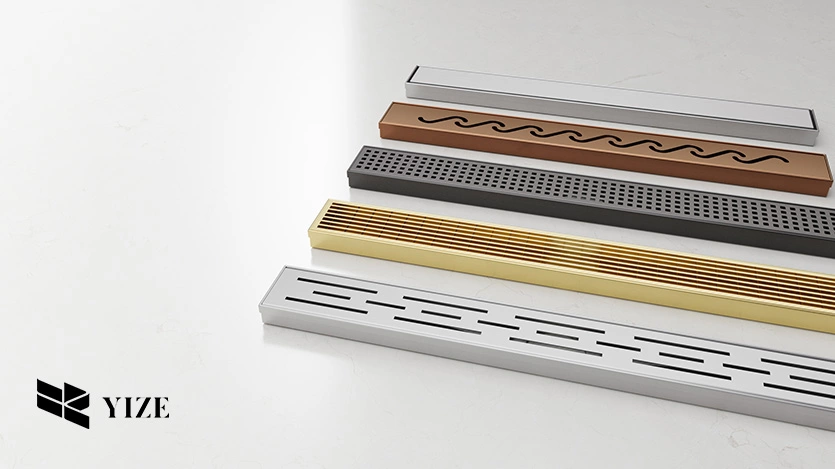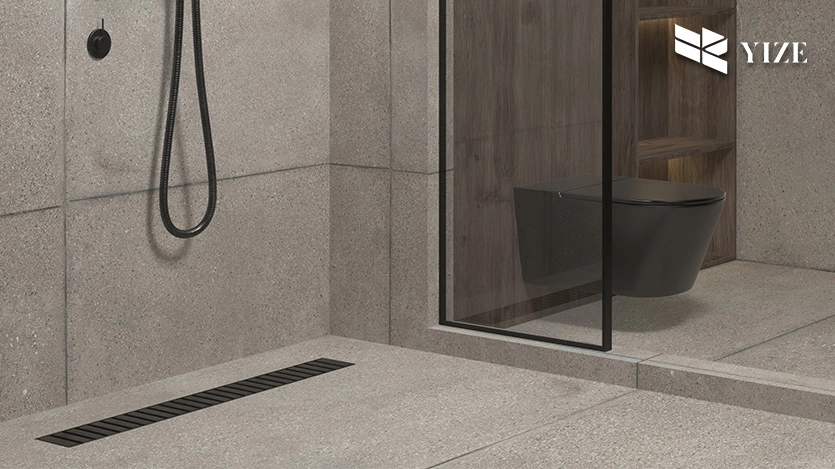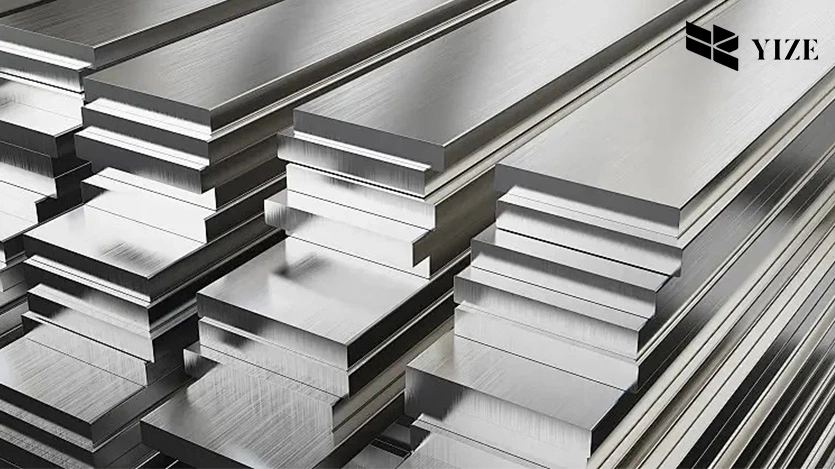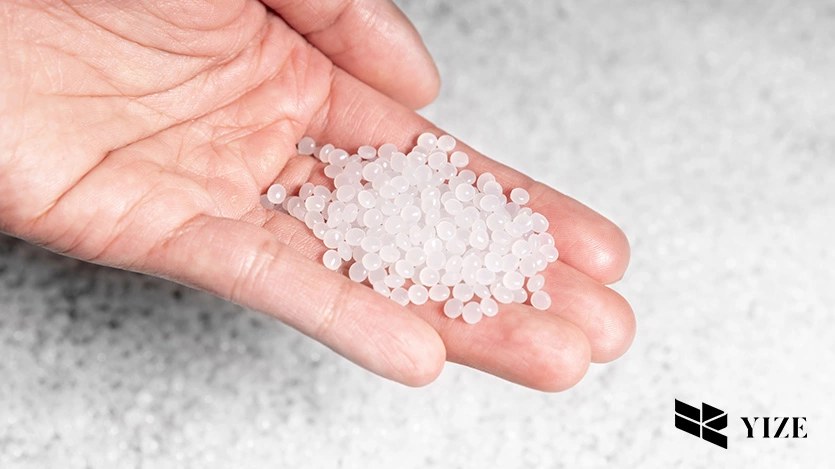Shower drain selection is a crucial detail in bathroom renovations, but most people do not pay enough attention to it. Proper drain selection has major consequences on shower functionality and overall design. The shower drain plays a vital role in maintaining proper water drainage.
This extensive guide covers all the steps needed to find the optimal shower drain for your bathroom area. This article provides all the needed information to support you in making an informed choice about your shower drain selection. This guide provides complete assistance for anyone in the process of building a new shower or replacing an existing shower.
I. Types of Shower Drains
The initial step in choosing an excellent shower drain is familiarizing yourself with the drain varieties available. The different shower drain varieties work well for distinct flooring arrangements, various dimensions, and visual presentations. The market features three major shower drain solutions: round drains, linear drains, and trench drains.
1. Traditional Round Drains

Round shower drains are the standard choice in terms of design and cost-effectiveness. Metal and plastic materials produce compact shower drains that are easy to install. The circular drainage grate sits on the floor surface at a level position.
The selection of traditional round drains suits bathrooms with compact designs and conventional and budget-conscious construction guidelines. Standard shower designs benefit from these drains; however, their sleek appearance is found only in linear or trench drains. The restricted drain opening can become significant for bigger showers, yet such drains properly function in tight bathroom spaces.
2. Linear Drains

Linear shower drains have a stretched-out oval shape compared to traditional circular shower drains. They are positioned along the wall or beneath benches to permit smooth water drainage toward the drainpipe.
Contemporary bathrooms frequently select linear drains because they enhance the visual appeal of walk-in showers through open, minimalist design styles. The modern appearance of linear drains matches today’s designs well since they have a streamlined shape that works perfectly in areas with floor-to-ceiling tiles and wet rooms. TCombiningefficient drainage with cylindrical designs allows linear drains to represent style elements commonly found in luxurious bathroom interiors.
3. Trench Drains

Linear trench drains are shower drainage systems that extend across the entire shower area. These particular drain systems are standard features in high-end and luxury bathrooms. Trench drains are integrated into the shower floor structure at installation and have a slim opening visible at the surface. Open-concept bathrooms and wet rooms benefit most from trench drains since their primary purpose is effectively directing water flows.
The generous dimensions of the bathroom and the aim for a contemporary upscale appearance make trench drains an excellent choice. The sterility of these drainage elements harmonises effortlessly with contemporary interior styles because their broad drainage channel effectively removes water from every direction in the shower.
II. Material Options for Shower Drains
Shower drain materials determine performance, durability, and appearance quality. Deciding correctly which material to use will result in a drain that operates well for multiple years.
1. Stainless Steel

Stainless steel is the primary choice for shower drain installations among builders throughout the market. The material is strong against rust and has a contemporary look that suits different bathroom decor types. Homeowners who stay busy can find stainless steel drains appealing because they provide convenient cleaning and maintenance benefits.
Your drain will maintain excellent resistance against typical shower wear because stainless steel is exceptionally durable when exposed to water. Due to its ability to resist corrosion, the material functions ideally in humid environments. Stainless steel drains provide long-term drainage durability and an attractive design at a higher price point than plastic drains.
2. Brass

Construction professionals appreciate brass as a tried-and-tested material because it produces radiant golden colours with everlasting aesthetics. Brass shower drains establish high durability and luxurious beauty, making them ideal for luxury bathroom designs. Brass’s resistance to corrosion persists unless the surface starts to tarnish, which occasionally needs periodic polishing for shine maintenance.
Brass drains are an excellent selection for anyone interested in developing a vintage or classic bathroom space. Brass’s combination of corrosion resistance and natural durability makes it an excellent choice, but owners should plan periodic maintenance to protect their appearance when brass develops tarnish, which affects its original shine.
3. Plastic

Plastic materials provide the most basic drain solution at a low cost. Durable and lightweight PVC or ABS drains provide a simple installation that works well for budget-minded homeowners. Plastic drains effectively drain water even though they fail to match the visual appearance of metal drains.
Plastic drains have become the selection for bathroom designs, focusing on basic functionality and cost-effectiveness as their main priority. These drains can survive corrosion well, but installation stays straightforward, though their long-lasting strength and luxurious texture match metal drains poorly. People choosing plastic drains find them suitable for financial restraint or want affordable, functional showers.
III. Installation Considerations
Your shower drain’s operation depends heavily on a correct installation process. Poor drain installation work leads to three main problems: accumulated water, delayed draining, and leakage. Multiple essential points must be considered when installing your shower drain.

1. Slope Requirements
Drain performance depends on maintaining proper sloping of the shower floor toward the drain. An appropriate slope on the floor directs water to the drain while stopping it from forming standing water anywhere else. The optimal drainage requires a slope of 1/4 inch that extends per foot of shower flooring. The absence of proper sloping enables water to stay on the shower floor, causing slow drainage, which might damage the area.
For the drain system to function properly, the shower floor needs uniformly sloped surfaces extending to every part. Every shower floor should receive a downward slope toward linear or trench drains to stop water buildup within a single flooring section.
2. Drain Positioning
Drain placement determines the success of water drainage in your shower. Regular round drain pipes are commonly found in the middle of the shower floor, whereas linear drains operate along one shower wall. The efficient drainage function depends on your choice of location for the drain because it must match the direction of the natural water flow.
Linear drains installed close to the shower entry point will guide water toward the rear section of the shower space in expansive shower designs and walk-ins. The drain layout demonstrates its ability to maintain efficient water drainage by stopping accumulation in either the middle or corner area of the shower floor.
3. Flooring Compatibility
Select a drainage system that operates with your shower floor material kind. Drain systems for tile floors differ from those with natural stone and vinyl flooring. The drain works flawlessly because correct compatibility leads to simple installation while stopping water from leaking.
The selection of the drain requires verification about its matching capabilities for your shower flooring since it affects drain installation and future durability.
IV. Maintenance and Care
The maintenance of your shower drain depends entirely on regular proper care. The following tips will help you maintain your drain system’s proper functioning and efficiency.
1. Regular Cleaning
Time leads to drain clogging through the accumulation of hair together with soap scum and mineral deposits. Scheduled cleaning prevents the build-up of substances, which eventually blocks drains. You should remove soap scum from the grate by applying a vinegar and baking soda mixture.
You should use either a drain brush or a mild cleaning solution to deepen your drain cleaning. Do not employ abrasive chemicals which may degrade your drain surfaces since they might cause staining issues, especially on brass and stainless steel drains.
2. Use Drain Covers
Installing drain covers prevents waterborne objects like hair and soap debris from blocking the drainpipes. This easy preventive step will help save time and cleaning work related to train maintenance. Drain covers possess removable features for scheduled maintenance, so users can easily clean the components.
Drain covers minimise drainage blockages by providing better water flow, which reduces the frequency of draining stoppages. Drain covers also act as a strong defense against hair accumulation in drain pipes, which is a frequent problem.
3. Inspect for Leaks
Regular checks of the shower drain area should be performed to identify any water damage or leaking points. Drain problems or broken seal damage can be diagnosed by examining gathered water around the drain. Prudent response to leaking systems helps stop upcoming significant damage.
It becomes essential to handle leaks immediately after their detection. Water leaks resulting from drain issues will harm the floor and associated walls and cost a lot to fix.
FAQs
Q1: What should be the material selection for a shower drain system?
The optimal shower drain component relies essentially on monetary resources, personal style choices, and readiness to maintain the drainage system. The market prefers stainless steel drain materials for their enduring quality, yet brass provides an upscale appearance. Plastic’s affordability renders it a suitable choice, although it does not match steel or brass in terms of durability.
Q2: What is the correct process for setting up a shower drain?
The correct shower drain installation method requires you to arrange the drain according to your shower design while sloping the floor toward the drainage point. The installation must also take account of your flooring, and the drain should be fastened securely to prevent leaks.
Q3: Which methods can I use to stop my shower drain from getting clogged?
To prevent drain clogs from hair and soap scum buildup and get into the system, you should clean the drain regularly and install a drain cover. You must check your drain for clogging signals, then proceed immediately with cleaning.
Linear shower drains differ from traditional drains through their elongated shape and unique characteristics. They stretch throughout the shower area and are situated along one wall. Linear shower drains serve modern functional purposes as they suit both larger and walk-in shower spaces. A traditional drain exists in a round shape, usually situated at the center of the shower floor.
Q4: The task of shower drain maintenance requires professional plumber expertise, or you can complete it yourself.
A shower drain replacement remains suitable for plumbing professionals, but it often requires professional help to perform correctly, particularly when dealing with linear and trench drain installations.
